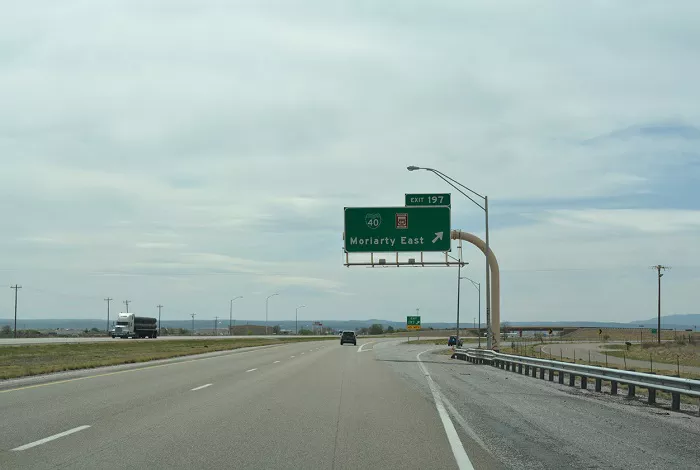Interstate 40 (I-40) is a major east-west highway crossing New Mexico, connecting cities like Albuquerque and Gallup. When traffic stops on I-40 West, travelers and locals alike want to know why. This article explores possible reasons for I-40 West traffic delays in New Mexico, analyzing geographical, environmental, and human factors that could be causing disruptions today.
Geographical Location of I-40 in New Mexico
I-40 stretches over 370 miles across New Mexico, passing through diverse landscapes. On a USA map, you can see it runs parallel to historic Route 66. The highway cuts through deserts, mountains, and Native American reservations, making it prone to different types of delays.
Common Causes of Traffic Stops on I-40 West
Several factors can halt traffic on this crucial artery:
Accidents and Crashes
With heavy truck traffic and long stretches between services, accidents frequently occur. A single crash can block lanes for hours during cleanup.
Road Construction
New Mexico often repairs I-40 due to weather damage and heavy use. Construction zones frequently reduce lanes, creating bottlenecks.
Severe Weather Conditions
Dust storms, snow, and flash floods – all common in New Mexico – can force temporary road closures for safety.
Law Enforcement Activity
Police may stop traffic for accident investigations, hazardous material spills, or high-speed chases.
Wildlife Crossings
Areas near wildlife reserves sometimes require temporary stops for animal migrations or emergency animal rescues.
Climate Factors Affecting I-40 Traffic
New Mexico’s varied climate significantly impacts I-40:
Dust Storms
Spring winds create dangerous visibility issues, especially near the Arizona border, forcing highway shutdowns.
Winter Weather
Mountainous sections like the Continental Divide can experience sudden snowstorms, requiring road closures.
Monsoon Rains
Summer thunderstorms cause flash floods that damage roads and create hazardous driving conditions.
Topographical Challenges Along I-40
The highway’s varying elevation presents unique problems:
Mountain Passes
Steep grades near Flagstaff and Albuquerque challenge large trucks, sometimes causing breakdowns that block traffic.
Desert Stretches
Long, remote sections with few exits mean accidents or breakdowns create long backups with limited alternate routes.
Geological Considerations
New Mexico’s geology contributes to highway issues:
Landslides
Areas with unstable slopes, particularly after heavy rains, may experience rockfalls that block lanes.
Sinkholes
Certain regions with soluble rock beneath the roadway can develop sudden sinkholes requiring emergency repairs.
Natural Environment and Ecology
Environmental factors sometimes stop traffic:
Wildfires
During fire season, smoke reduces visibility, and active fires may cross the highway, forcing closures.
Protected Species
Rare wildlife sightings near the road, like Mexican gray wolves, sometimes prompt temporary stops.
Historical and Cultural Influences
New Mexico’s unique heritage affects I-40 operations:
Native American Lands
Portions of I-40 cross tribal territories where local authorities may close roads for cultural events or emergencies.
Historic Route 66
Parallel to much of I-40, this historic route’s popularity sometimes diverts traffic during special events.
Economic Factors
The highway’s commercial importance contributes to congestion:
Trucking Volume
As a major freight corridor, heavy truck traffic increases accident risks and wear on road surfaces.
Tourism Peaks
During peak travel seasons, increased recreational vehicles and tourist traffic slow overall flow.
Population Centers and Traffic Patterns
Key cities along I-40 affect traffic:
Albuquerque
The state’s largest city creates consistent congestion, especially during rush hours.
Gallup
This major truck stop town sees frequent commercial vehicle inspections that may slow traffic.
Conclusion
When traffic stops on I-40 West in New Mexico today, the cause could range from accidents and weather to construction or special events. The highway’s path through diverse landscapes and communities means many factors can disrupt flow. By understanding these potential causes and checking reliable sources like the World Maps Guide for regional context, travelers can better navigate delays. Always check current conditions before traveling this vital but sometimes unpredictable corridor.

